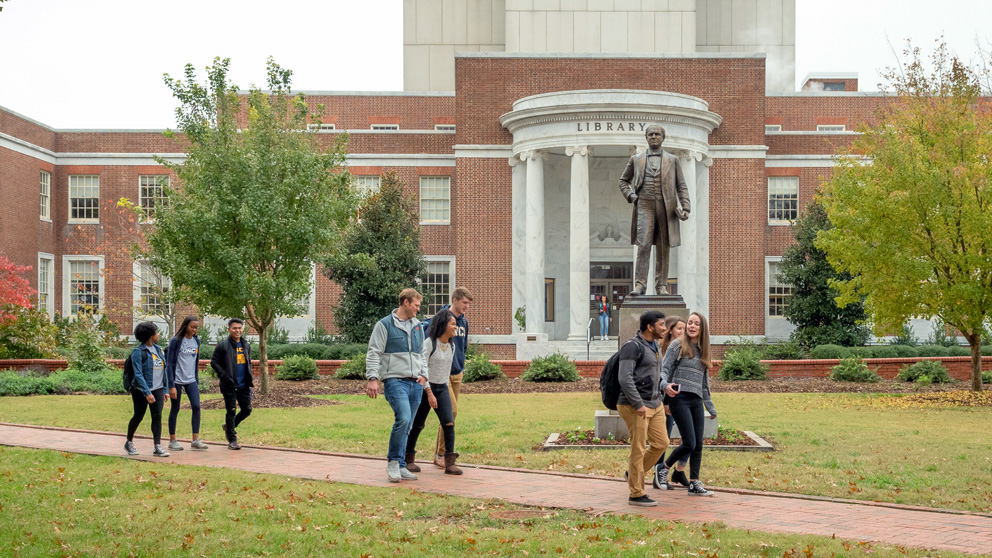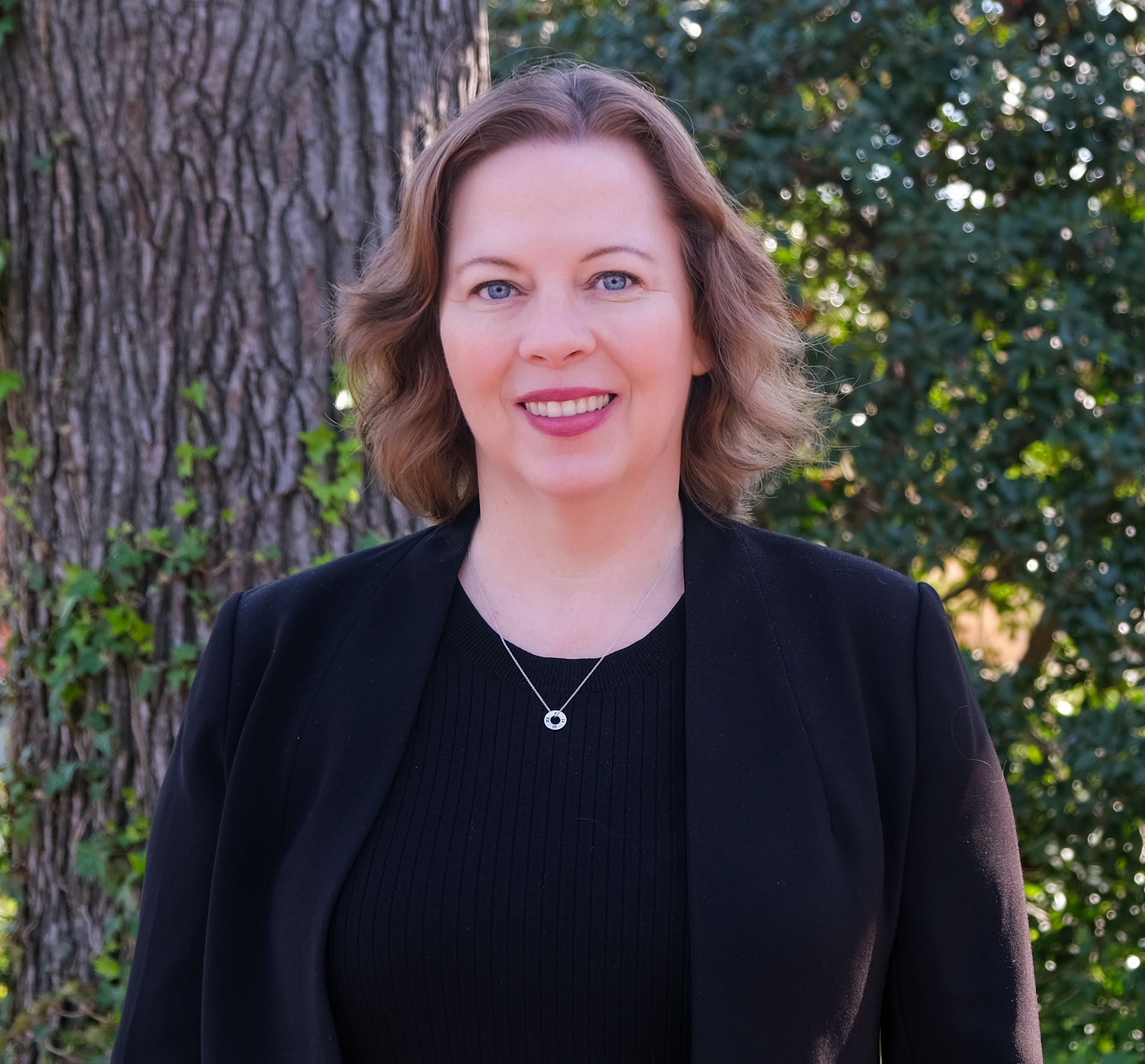It’s Never
Too Late
How the University of North Carolina at Greensboro Re-Engages and Supports Stopped Out Students

To boost retention and graduation rates, the University of North Carolina at Greensboro (UNCG) created a dedicated role for re-engaging stopped-out students while partnering with ReUp for the high-touch, personalized support adult learners need to persist to graduation.
Student retention and stopout prevention are top of mind for many higher education leaders as graduation rates continue to decline. According to the U.S. Department of Education, only 20% of students who begin at two-year institutions graduate within three years. At four-year institutions, only 4 in 10 students receive a degree within six years (Public Agenda).
While most retention efforts focus on current students or those who have stopped out for one to two years, many forward-thinking institutions are looking at how they can re-enroll students who have left higher education for longer periods before completing their degree. The University of North Carolina at Greensboro (UNCG) has taken this approach by adding a dedicated Stop-Out Prevention and Re-Entry Coordinator that works in partnership with ReUp.
We spoke with Gina Ingraham, who holds the title of Stop-Out Prevention and Re-Entry Coordinator at UNCG, to learn how colleges and universities can support adult learners on their path to graduation.

ReUp: Why did UNCG decide to dedicate resources, and a coordinator, specifically to support returning students and those at risk of stopping out?
Our Vice Chancellor for Enrollment Management, Tina McEntire, and our Associate Vice Chancellor for Enrollment Management, Joel Lee, both had previously worked with re-enrollment efforts at other schools and immediately saw the need for increased focus on this important student population here at UNCG. My background working in the Financial Aid Office, along with additional prior experience in academic advising and admissions, made me particularly well positioned to contribute to the re-enrollment strategy. In 2022, we were able to secure grant funding for a short-term outreach effort, and the success of that effort has allowed for the re-enrollment of former students to become more of an institutional priority.
We also wanted to increase graduation rates. Because we have a large percentage of low-income students, with many being non-traditional, adult, and/or commuter students, we have a lot of stop-and-start students who are at risk of completely stopping out. We knew that we needed to help students navigate the challenges they faced. For the student, it can be daunting to have to reach out to multiple different offices to get all the answers they need to re-enroll. Providing a point of contact to help students navigate many processes at once was very important to us.
ReUp: What’s the difference between traditional enrollment support services and re-entry support?
With re-entry support and stop-out prevention, the key difference is providing the personalized, tailored support that a student needs on an individual level so that they can return and persist to graduation without stopping out again — whether it’s degree evaluation, financial aid navigation, billing and payments, or being a liaison between different departments.
For the students, it is very helpful to have one main point of contact who can be of assistance and point them in the right direction for various needs. Someone looking at the student journey holistically across finance, academics, and other areas can proactively discover recommendations that are highly relevant to that student. For example, if you see that a student would be a lot closer to completing a degree if they switched majors, you can put that on their radar. Or if you see that they are getting very close to max hours for financial aid eligibility but they still have a way to go in their program, you can help them anticipate and plan for future challenges.
ReUp: Why is it important for higher ed institutions to pay attention to retention and supporting adult learners?
Ellia As a state school, our population tends to stay and work in our local communities – helping our students attain an education helps them contribute to the surrounding community and the state of North Carolina at large, so it benefits everybody to help students persist. It also helps students and their families on a more personal level. We simply care about our students and want the best for them. We want the same thing for them as they do – we want them to graduate, find a meaningful career, and have a great life post-graduation.
“Our population tends to stay and work in our local communities – helping our students attain an education helps them contribute to the surrounding community and the state of North Carolina at large, so it benefits everybody to help students persist.”
— Gina Ingraham
Stop-Out Prevention and Re-Entry Coordinator at the University of North Carolina at Greensboro

ReUp: What is a misconception that higher education leaders believe about students who stop out?
Ellia Probably the most common perception is that students stop out primarily for academic reasons – that they weren’t ready for college and did poorly. But there are many complex reasons people stop out— financial challenges, job commitments, children, relocations, etc (see ReUp’s data on student motivations below). The reasons are layered and nuanced, which is why empathy is so important. The desire to complete their degree is still there and they need the opportunities, support, and resources to come back.
Another interesting thing people often don’t realize is that the longer a person has been out of college, the more it’s on their mind. Maybe their kids are grown now and off to college, and the parent wants to finish their degree. They want to be a role model. Traditionally, student outreach has been concentrated on former students who have been out for one to two years, thinking that they’re going to be more easily engaged, but I think some people have been chewing on the idea of returning for a very long time – they just have no idea how to get started.
ReUp: What have you learned taking on this role and what are some best practices you’ve implemented?
Ellia This role allows me to bring together disparate experiences, from working with financial aid to academics and student support, to help individuals on a deeper level than before. Now I’m able to create more immediate change in people’s lives by providing a level of comfort and personalization to the student experience.
I’m here to bridge silos, and that requires working across teams. So I would say that this role requires support from the institution in gaining greater access to people and resources. This is important for students, too, so that they don’t feel like they’re ping-ponging between staff members to get time-sensitive matters resolved.
Here are the best practices that I’ve developed through my role over time:
Advocate for transparency and access to student information
As I said, this is important to provide the right kind of personalized support that students need. This is also the most difficult barrier for most institutions, breaking down those silos to get a more complete picture of individual students’ needs.
Have a constant learner mindset
I’m always learning from my colleagues in different departments, doing deep dives across multiple areas. Even with my 20+ years of higher education experience, I am constantly learning about everything from new academic programs to federal regulations–everything is always in flux.
Build partnerships across teams
The needs of academics and student support offices may sometimes differ, but the goal is always the same – student success. Align on what matters most and figure out how to get there faster by partnering up.
Be empathetic in student communications
Empathy to me means being very intentional and sensitive in how you communicate with others. Language needs to reflect a level of understanding and patience – you can’t be dry and clinical. We are continually updating our website and other publications, and I’m always looking to improve personal communication.
Celebrate individual student milestones and their impact on student’s lives
This is important, especially at the beginning of launching a stopout prevention and/or returning student support initiative, because you aren’t going to see dramatic results immediately. Showing the impact on individual people’s lives helps change perceptions and show what’s possible. To see a student graduate and feel so proud of their school makes everyone who has supported that student feel like they’ve succeeded too.
ReUp: Your role is so comprehensive–what is the value you find in partnering with ReUp?
Ellia There’s a lot of high-touch outreach that needs to occur before the individual support can begin. I’m only one person, with only so much time to answer emails and set up appointments. As institutions grow their support initiatives, they need additional coaches to hear those individual stories — that’s the time-consuming part. It’s deeply personal and can’t be rushed. Having a partner like ReUp allows me to do more of the work on building relationships once they’re in our pipeline.
We’ve been pleased with the proactive and caring nature shown by the ReUp Success Coaches. They’ve provided hands-on assistance to students, helping them navigate the admission process, while also connecting us with students who might have more complex needs or questions. The partnership with ReUp has added tremendous value to our outreach efforts.
Let’s start the conversation
Schedule a call with a ReUp team member to learn more about what a ReUp partnership could do for your institution.